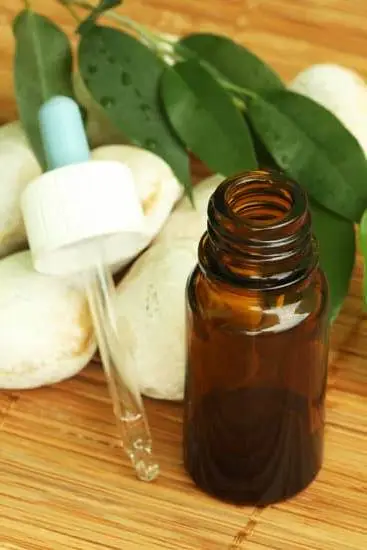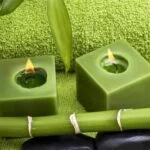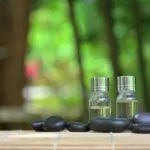Aromatherapy massage is a type of massage that incorporates the use of essential oils to promote healing and relaxation. In this article, we will explore the definition of aromatherapy massage, its history, the benefits it offers, the techniques used, and how it differs from traditional massage.
Aromatherapy massage is a holistic approach to health and wellness that combines the therapeutic benefits of touch with the natural healing properties of essential oils. This form of massage has been practiced for centuries and continues to gain popularity due to its numerous physical and mental health benefits.
In this section, we will delve into the origins and principles of aromatherapy massage, providing an in-depth understanding of what it entails and why it has become a popular alternative therapy for many individuals seeking relief from stress, muscle tension, and other common ailments. We will also explore how aromatherapy oils play a key role in enhancing the overall experience of an aromatherapy massage.
History of Aromatherapy
Aromatherapy massage has been practiced for centuries, with its roots tracing back to ancient civilizations such as the Egyptians, Greeks, and Romans. The term “aromatherapy” is derived from the use of aromatic plant extracts and essential oils in the massage therapy process. These oils are known for their therapeutic properties, including relaxation, stress relief, and healing. The history of aromatherapy can be seen in various cultures where natural ingredients were used for medicinal and wellness purposes.
One of the earliest recorded uses of aromatherapy comes from ancient Egypt, where they used aromatic oils for embalming and preserving the bodies of the deceased. The Egyptians also utilized essential oils in their daily lives for beauty treatments and spiritual rituals. In ancient Greece, Hippocrates, known as the father of modern medicine, incorporated aromatic massage techniques into his practice to promote overall well-being.
During the Middle Ages, aromatic plants were commonly used to combat diseases such as the bubonic plague. The practice continued to evolve over time and spread across different continents. Fast forward to today, aromatherapy massage has become a popular holistic approach to health and wellness around the world.
Aromatherapy’s long-standing history showcases its effectiveness in promoting physical and mental well-being throughout the ages. Its roots can be seen in various cultures and traditions, making it a truly timeless practice that continues to provide numerous benefits to those who seek its healing properties.
| Aspect | Description |
|---|---|
| Roots | Ancient civilizations like Egyptians, Greeks, and Romans |
| Early Uses | Embalming in Egypt; holistic approach by Hippocrates in Greece |
| Middle Ages | Aromatic plants used to combat diseases such as bubonic plague |
Understanding Aromatherapy Oils
Aromatherapy oils are the backbone of aromatherapy massage, as they are the main tools used to provide both physical and mental relief. These essential oils are extracted from various plants, flowers, and herbs and each one has unique properties and benefits. When combined with massage, these oils can create a powerful holistic treatment that addresses both the body and mind.
The use of aromatherapy oils can be traced back thousands of years to ancient civilizations in Egypt, China, and India. They were used for medicinal purposes, spiritual rituals, and even in beauty treatments. Today, aromatherapy oils are commonly used in massage therapy to promote relaxation, relieve stress, alleviate pain, improve mood, and enhance overall well-being.
Some of the most popular aromatherapy oils used in massage include lavender for relaxation and stress relief, peppermint for pain relief and energy boost, eucalyptus for respiratory support and mental clarity, and chamomile for calming effects. Each oil has its own unique aroma and therapeutic properties that contribute to the overall experience of an aromatherapy massage.
| Aromatherapy Oil | Properties |
|---|---|
| Lavender | Relaxation & stress relief |
| Peppermint | Pain relief & energy boost |
| Eucalyptus | Respiratory support & mental clarity |
| Chamomile | Calming effects |
Benefits of Aromatherapy Massage
Aromatherapy massage offers a wide range of physical and mental benefits, making it a popular choice for individuals seeking relaxation and healing. The use of essential oils combined with massage techniques can provide both immediate and long-term advantages for the body and mind. Here are some of the key benefits of aromatherapy massage:
- Stress Relief: Aromatherapy massage is known for its ability to reduce stress and anxiety levels. The soothing scents of essential oils such as lavender, chamomile, and ylang-ylang can help calm the mind and promote relaxation during the massage session.
- Pain Management: Many essential oils used in aromatherapy massage have analgesic properties that can help alleviate pain and discomfort in the body. Oils like peppermint, eucalyptus, and rosemary are commonly used to relieve muscle tension, headaches, and joint pain.
- Improved Circulation: The combination of therapeutic touch and essential oils in aromatherapy massage can enhance blood circulation throughout the body. This can lead to better oxygenation of tissues, improved overall health, and faster recovery from injuries.
In addition to these physical benefits, aromatherapy massage also provides mental advantages such as improved mood, enhanced focus, and overall well-being. By targeting both the body and mind, this holistic approach to wellness has gained recognition as an effective complementary therapy for various health conditions.
Techniques Used in Aromatherapy Massage
Aromatherapy massage is a form of holistic therapy that combines the natural therapeutic properties of essential oils with the healing power of touch. This unique type of massage focuses on creating a harmonious balance between the mind, body, and spirit, using aromatic essential oils to promote relaxation and overall well-being. Aromatherapy massage techniques are specifically designed to enhance the physical and mental benefits of traditional massage by incorporating the use of essential oils.
The techniques used in aromatherapy massage differ from regular massages in several key ways. First and foremost, aromatherapy massage involves the use of highly concentrated plant extracts, known as essential oils, which are carefully selected based on their specific therapeutic properties.
These essential oils are then diluted in a carrier oil and applied to the skin through gentle, rhythmic massage strokes. Unlike traditional massages that focus solely on alleviating muscle tension and promoting relaxation through touch, aromatherapy massages target both physical and emotional well-being by harnessing the natural healing properties found in essential oils.
To further differentiate itself from traditional massages, aromatherapy massages often incorporate additional sensory elements such as soothing music, dim lighting, and calming scents to create a truly immersive experience. The combination of these sensory elements along with the application of specific essential oils allows for a more holistic approach to healing and relaxation.
By stimulating the olfactory system (sense of smell) along with touch therapy, aromatherapy massage aims to provide a multi-sensory experience that can have profound effects on one’s overall well-being.
In addition to its emphasis on using essential oils and creating a multi-sensory experience, another key difference between aromatherapy massage and traditional massages lies in its intention. While traditional massages primarily focus on addressing physical tension and promoting relaxation, aromatherapy massages aim to address both physical discomforts and emotional imbalances by using specific blends of essential oils tailored to individual needs.
Whether it’s targeting stress relief or easing muscle pain, aromatherapy massage techniques offer a more personalized approach to promoting overall wellness through the combination of touch therapy and aromatic blends.
Aromatherapy Massage vs Traditional Massage
When it comes to seeking relaxation and rejuvenation, two popular options include traditional massage and aromatherapy massage. While both aim to promote overall well-being, there are key differences between the two types of massages that should be considered before making a decision.
Essential Oils vs. Massage Oils
One of the main distinctions between aromatherapy massage and traditional massage is the use of essential oils. In aromatherapy massage, essential oils are incorporated into the massage session to enhance the therapeutic effects. These oils are derived from plants and have unique properties that can promote relaxation, reduce stress, and alleviate certain physical ailments. On the other hand, traditional massage typically uses unscented massage oils or lotions without the added benefits of essential oils.
Focused Therapy vs Relaxation
Another difference between the two types of massages is their primary focus during the session. Aromatherapy massage often involves a more targeted approach to address specific issues such as muscle tension, stress, or anxiety. The use of essential oils in aromatherapy massage allows for a more focused therapy to address these concerns. Conversely, traditional massages generally focus on overall relaxation and promoting general well-being without specific targeting of individual concerns.
Breathing Techniques and Mindfulness
In addition to the use of essential oils and targeted therapy, aromatherapy massages often incorporate breathing techniques and mindfulness practices to enhance relaxation and promote mental wellness. Practitioners may guide clients through deep breathing exercises or encourage them to focus on their breath during the session. These techniques may not be as prominent in traditional massages, which usually concentrate solely on physical manipulation of muscles for relaxation purposes.
Preparing for an Aromatherapy Massage
Setting the Right Atmosphere
One of the key aspects of preparing for an aromatherapy massage is setting the right atmosphere. The environment in which the massage takes place can greatly enhance its effectiveness. This typically involves a dimly lit room, calming music, and the use of essential oils to create a soothing and relaxing ambiance. The therapist may also use techniques such as gentle lighting, soft fabrics, and comforting scents to help you unwind before the massage even begins.
Consultation With Therapist
Before your aromatherapy massage begins, it’s important to have a consultation with the therapist. During this time, you will discuss your specific needs and any health concerns that may impact the massage. You will also have the opportunity to choose from a selection of essential oils that will be used during the session. This is an integral part of preparing for an aromatherapy massage as it allows you to tailor the experience to your individual preferences and requirements.
Relaxation Techniques
In preparation for an aromatherapy massage, it’s beneficial to practice relaxation techniques such as deep breathing or meditation. These methods can help quiet your mind and release any tension or stress you may be holding onto. By calming both your body and mind before the massage begins, you are likely to experience even greater benefits from this specialized form of therapy.
By taking these preparatory steps, you can ensure that you get the most out of your aromatherapy massage experience. With careful attention paid to creating the right atmosphere, consulting with your therapist, and practicing relaxation techniques, you can set yourself up for a deeply rejuvenating and therapeutic session.
Conclusion
In conclusion, aromatherapy massage offers a unique combination of physical and mental benefits that can help improve your overall well-being. By using essential oils and incorporating gentle massage techniques, this type of massage can provide relaxation, stress relief, and even alleviate certain physical ailments. The history of aromatherapy dates back centuries, and its continued popularity speaks to the efficacy of this natural healing method.
The key players in aromatherapy are the essential oils used during the massage. These oils play a significant role in providing therapeutic benefits, such as calming the mind, soothing sore muscles, improving circulation, and promoting better sleep. When considering an aromatherapy massage, it’s important to understand the specific properties of each essential oil and how they can address your unique needs.
When compared to traditional massages, aromatherapy massages offer a more holistic approach by targeting both physical and emotional well-being. This makes it an excellent choice for anyone looking to experience a sense of balance and tranquility. So if you’re looking for a natural way to relax and rejuvenate your body and mind, consider trying an aromatherapy massage today.
Frequently Asked Questions
What Is an Aromatherapy Massage Good For?
An aromatherapy massage is good for relaxation, stress relief, and mood enhancement. The essential oils used in the massage can promote a sense of well-being and alleviate muscle tension.
What Is the Difference Between a Normal Massage and an Aromatherapy Massage?
The main difference between a normal massage and an aromatherapy massage lies in the use of essential oils. Aromatherapy massages incorporate the use of specific oils that are chosen for their therapeutic properties, adding an extra dimension to the massage experience.
What Happens in a Full Body Aromatherapy Massage?
During a full-body aromatherapy massage, the therapist will apply diluted essential oils to the body using long, gentle strokes to promote relaxation and relieve muscle tension. The aroma of the essential oils will also enhance the overall experience by stimulating the olfactory senses.

Are you looking for a natural way to improve your health and wellbeing?
If so, aromatherapy may be the answer for you.





